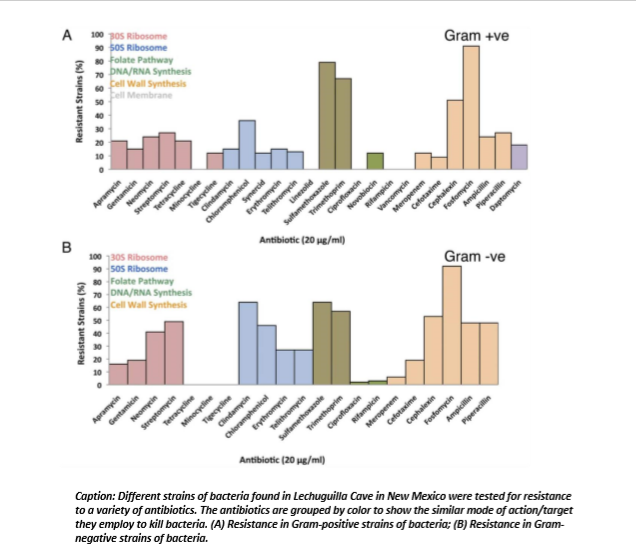A 100 pos Ribosome 90 5OS Ribosome Folate Pathway DNA/RNA Synthesis bell Wall Synthesis Cell Membrane Gram +ve Streptomy Tetracycl Gentami Neomucie в nphenicol nerie 100 130S Ribosome 90 sOS Ribosome 80 Folate Pathway 70 DNA/RNA Synthesis o Cell Wall Synthesis Antibiotic (20 ug/ml) peracilin sptomyc Gram -ve tamicin Neomycin Streptomycin Tetracycline Clindamy Chi oramphenicol Caption: Different strains of bacteria found in Lechuguilla Cave in New Mexico were tested for resistance to a variety of antibiotics. The antibiotics are grouped by color to show the similar mode of action/target they employ to kill bacteria. (A) Resistance in Gram-positive strains of bacteria; (B) Resistance in Gram- negative strains of Antibiotic (20 yg/mi) 8 8 8RS SSRRS. Resistant Strains (%) Resistant Strains (%) Minocycline auplega gecycline Minocycline Tigecycline uakuyse Ampicillin
Genetic Recombination
Recombination is crucial to this process because it allows genes to be reassorted into diverse combinations. Genetic recombination is the process of combining genetic components from two different origins into a single unit. In prokaryotes, genetic recombination takes place by the unilateral transfer of deoxyribonucleic acid. It includes transduction, transformation, and conjugation. The genetic exchange occurring between homologous deoxyribonucleic acid sequences (DNA) from two different sources is termed general recombination. For this to happen, an identical sequence of the two recombining molecules is required. The process of genetic exchange which occurs in eukaryotes during sexual reproduction such as meiosis is an example of this type of genetic recombination.
Microbial Genetics
Genes are the functional units of heredity. They transfer characteristic information from parents to the offspring.
BACKGROUND INFORMATION Since the discovery of the first antibiotic, penicillin, in 1928, antibiotics have revolutionized the fight against bacterial infections. Antibiotics are chemicals that specifically target and kill bacteria. Unfortunately, they are often prescribed unnecessarily and frequently misused by patients. Research has shown that these trends have contributed to the recent evolution of bacteria that are resistant to antibiotics. What is less clear is whether the bacterial genes that confer antibiotic resistance (collectively called the “resistome”) are all newly evolved since the introduction of antibiotics or have evolved independently.
Data Point Origins of Antibiotic Resistance Student Handout
To answer this question, scientists collected bacteria from locations that had never been exposed to humans or modern antibiotics. Their study site, a remote cave located within Carlsbad Caverns National Park in New Mexico, called Lechuguilla Cave, was estimated to have been isolated from human contact and surface contamination (such as rainwater) for at least 4 million years, with extremely restricted access since its discovery in the 1980s. The scientists collected over 500 unique bacterial strains from three locations in the cave. Of these, 93 culturable strains were randomly selected to be screened for resistance to modern-day antibiotics.
About 60% of the bacteria were Gram-negative, which means that they have a protective outer membrane and are resistant to many antibiotics. The remaining bacteria were classified as Gram-positive, meaning they lack this outer membrane. The bacteria were tested for survival against 26 different antibiotics, each falling into one of six categories based on the protein or pathway it targeted within bacterial cells: 30S ribosome, 50S ribosome, folate pathway, DNA/RNA synthesis, cell wall synthesis, or the cell membrane. Each strain of bacteria was tested by placing it on growth medium (food) that contained a high concentration of an antibiotic. If the bacterial strain could reach a cell density (a measure of bacterial growth) of at least half that achieved by the same strain growing without antibiotic, it was considered resistant to the antibiotic.
Bacteria
If most of the bacteria stains are sensitive to an antibiotic would you see a large bar or a small bar?
Which antibiotics kill 100% of gram negative bacteria strains? Which pathway(s) do these antibiotics affect?
Which antibiotics kill 100 of the gram positive bacteria stains? Which pathway(s) do these antibiotics affect?
Which antibiotics are effective against both gram negative and gram positive bacteria stains?
Which antibiotic is least successful at killing the cave derived bacteria?
If a bacteria strain developed resistance to minocycline what do you think we should do? Could we do anything?
Why do you think that bacteria that had never been exposed to humans would be antibiotic resistant?
Do you know what kinds of organism normally make antibiotics?
Why do you think these organisms make antibiotics? Why would it be beneficial for bacteria to develop resistance.

Trending now
This is a popular solution!
Step by step
Solved in 5 steps









